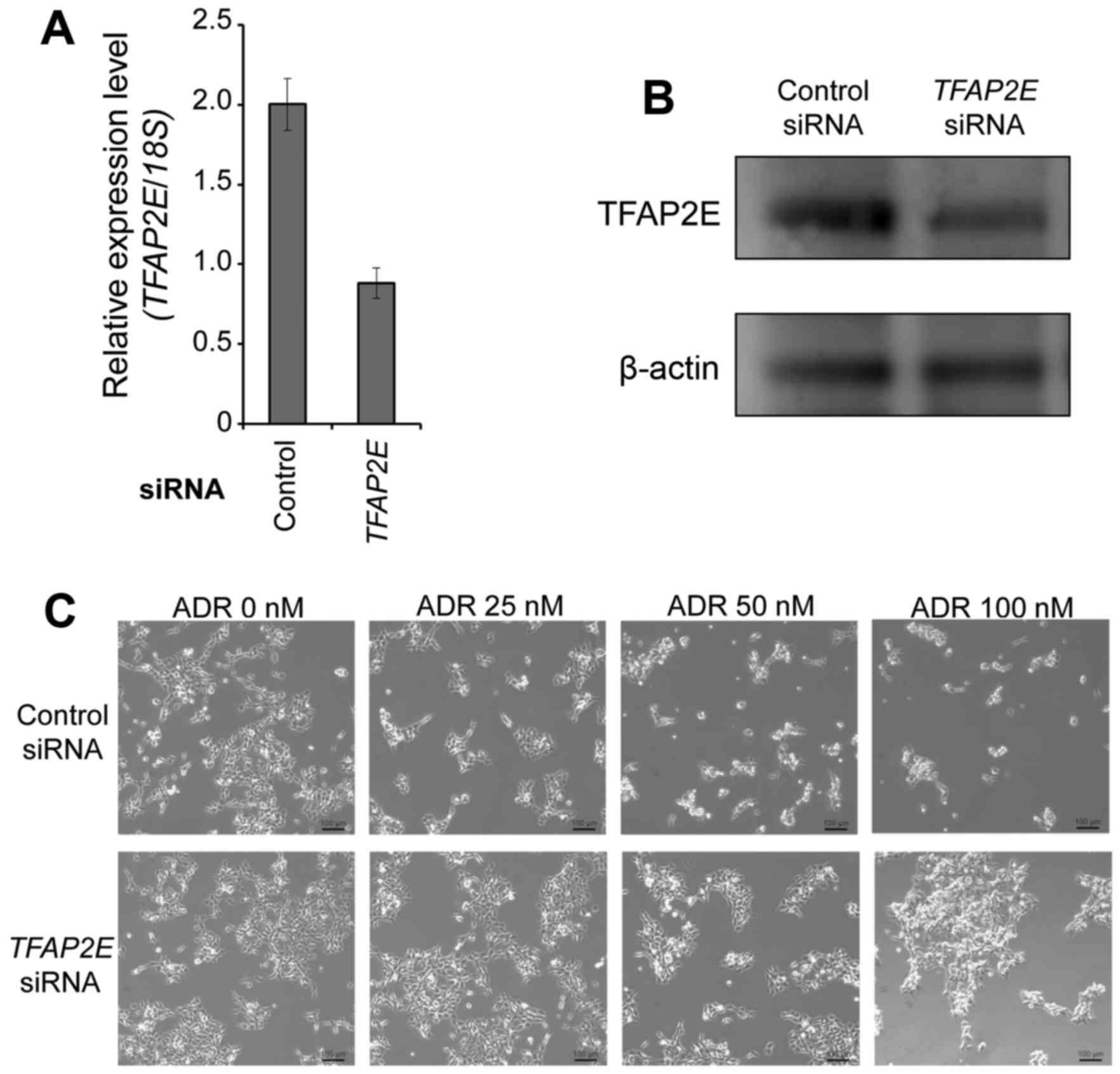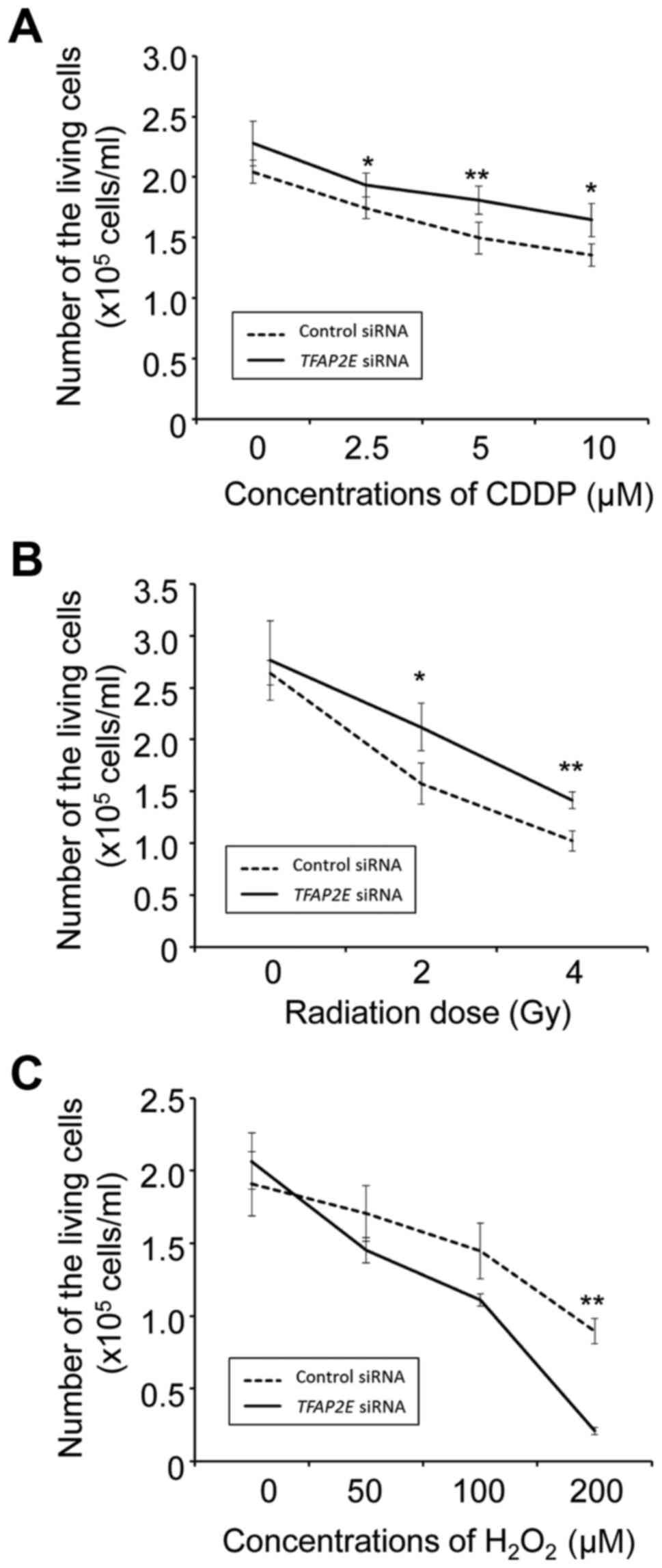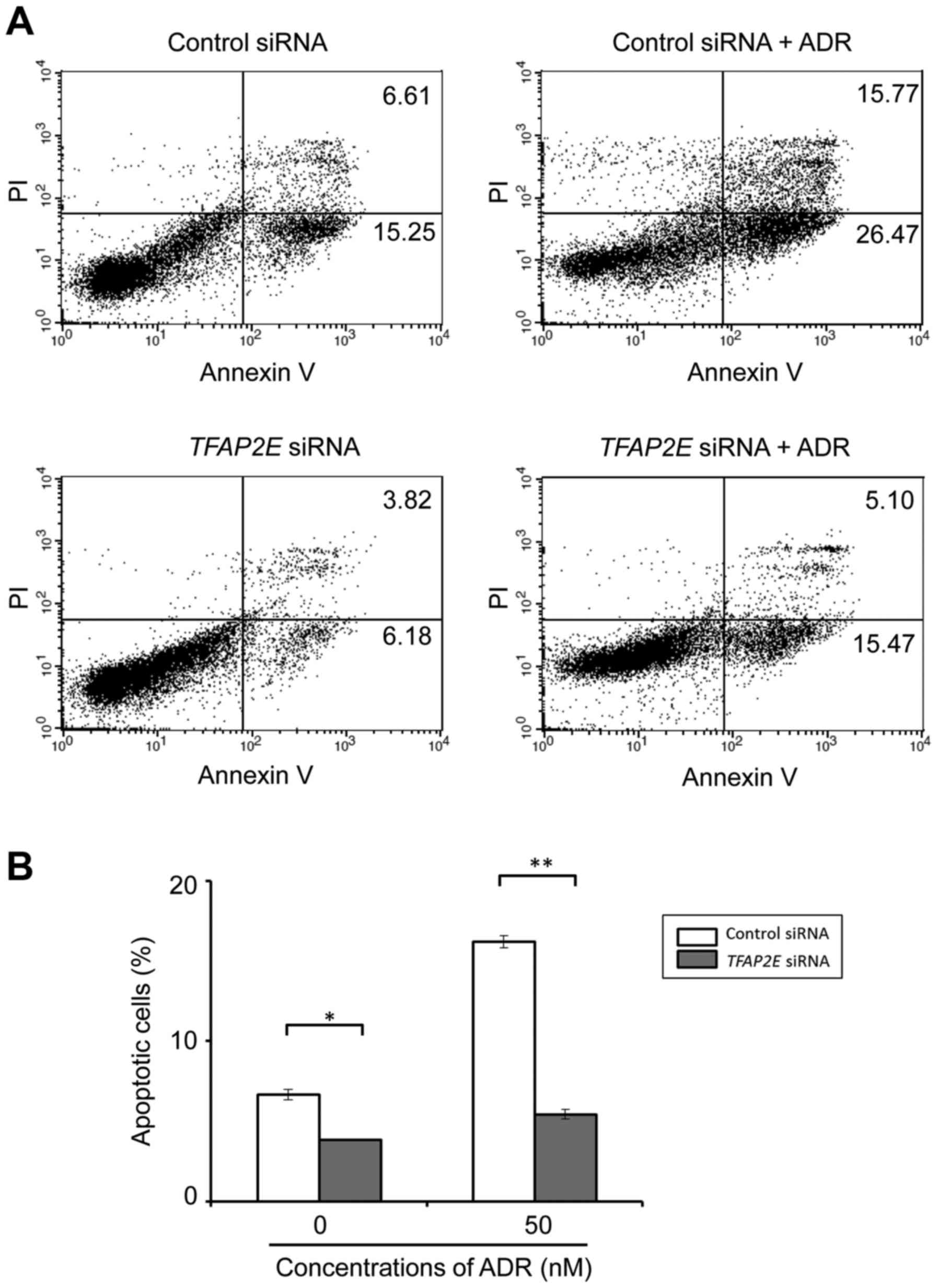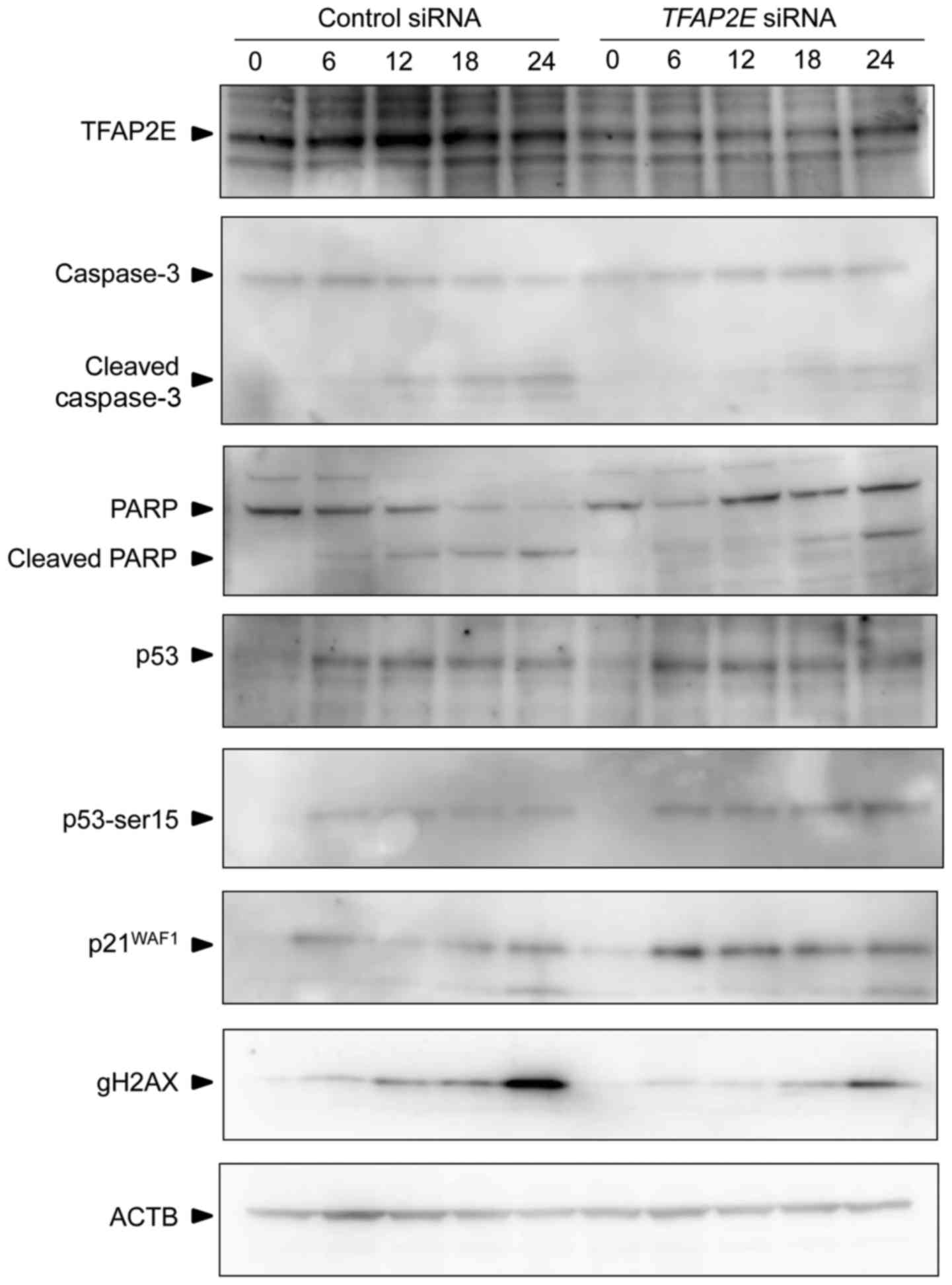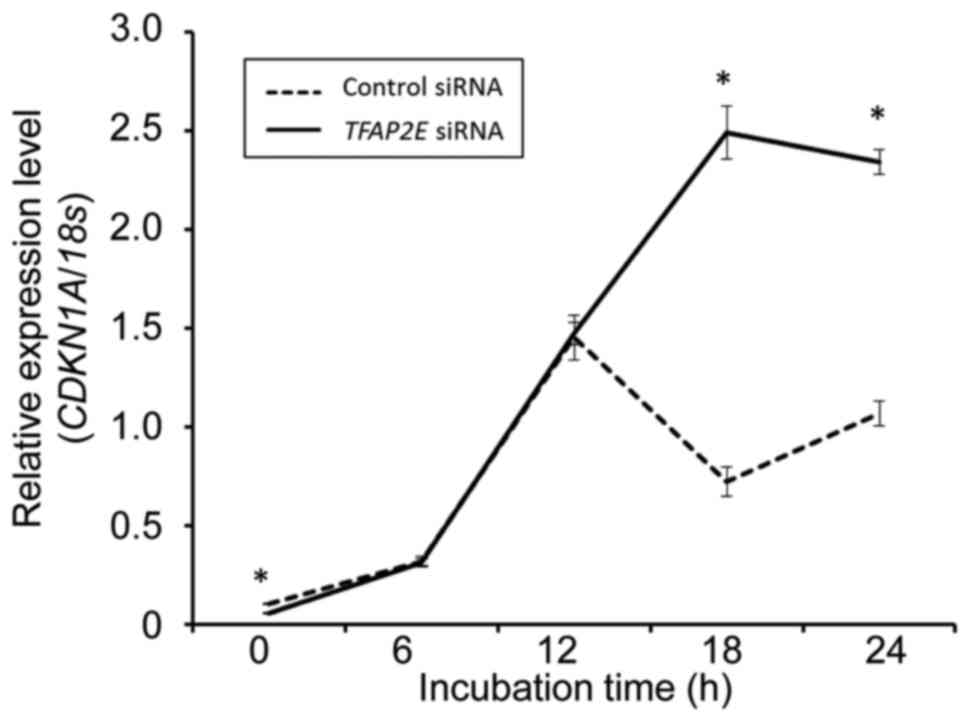|
1
|
Maris JM, Hogarty MD, Bagatell R and Cohn
SL: Neuroblastoma. Lancet. 369:2106–2120. 2007. View Article : Google Scholar : PubMed/NCBI
|
|
2
|
Dang CV: MYC on the path to cancer. Cell.
149:22–35. 2012. View Article : Google Scholar : PubMed/NCBI
|
|
3
|
Caron H: Allelic loss of chromosome 1 and
additional chromosome 17 material are both unfavourable prognostic
markers in neuroblastoma. Med Pediatr Oncol. 24:215–221. 1995.
View Article : Google Scholar : PubMed/NCBI
|
|
4
|
Lampert F, Rudolph B, Christiansen H and
Franke F: Identical chromosome 1p breakpoint abnormality in both
the tumor and the constitutional karyotype of a patient with
neuroblastoma. Cancer Genet Cytogenet. 34:235–239. 1988. View Article : Google Scholar : PubMed/NCBI
|
|
5
|
Takagi K, Fujiwara K, Takayama T, Mamiya
T, Soma M and Nagase H: DNA hypermethylation of zygote arrest 1
(ZAR1) in hepatitis C virus positive related hepatocellular
carcinoma. Springerplus. 2:1502013. View Article : Google Scholar : PubMed/NCBI
|
|
6
|
Shinojima Y, Terui T, Hara H, Kimura M,
Igarashi J, Wang X, Kawashima H, Kobayashi Y, Muroi S, Hayakawa S,
et al: Identification and analysis of an early diagnostic marker
for malignant melanoma: ZAR1 intra-genic differential methylation.
J Dermatol Sci. 59:98–106. 2010. View Article : Google Scholar : PubMed/NCBI
|
|
7
|
Watanabe T, Yachi K, Ohta T, Fukushima T,
Yoshino A, Katayama Y, Shinojima Y, Terui T and Nagase H: Aberrant
hypermethylation of non-promoter zygote arrest 1 (ZAR1) in human
brain tumors. Neurol Med Chir (Tokyo). 50:1062–1069. 2010.
View Article : Google Scholar : PubMed/NCBI
|
|
8
|
Sugito K, Kawashima H, Yoshizawa S, Uekusa
S, Hoshi R, Furuya T, Kaneda H, Hosoda T, Konuma N, Masuko T, et
al: Non-promoter DNA hypermethylation of zygote arrest 1 (ZAR1) in
neuroblastomas. J Pediatr Surg. 48:782–788. 2013. View Article : Google Scholar : PubMed/NCBI
|
|
9
|
Fujiwara K, Ghosh S, Liang P, Morien E,
Soma M and Nagase H: Genome-wide screening of aberrant DNA
methylation which associated with gene expression in mouse skin
cancers. Mol Carcinog. 54:178–188. 2015. View Article : Google Scholar : PubMed/NCBI
|
|
10
|
Tummala R, Romano RA, Fuchs E and Sinha S:
Molecular cloning and characterization of AP-2 epsilon, a fifth
member of the AP-2 family. Gene. 321:93–102. 2003. View Article : Google Scholar : PubMed/NCBI
|
|
11
|
Ebert MP, Tänzer M, Balluff B,
Burgermeister E, Kretzschmar AK, Hughes DJ, Tetzner R, Lofton-Day
C, Rosenberg R, Reinacher-Schick AC, et al: TFAP2E-DKK4 and
chemoresistance in colorectal cancer. N Engl J Med. 366:44–53.
2012. View Article : Google Scholar : PubMed/NCBI
|
|
12
|
Sun J, Du N, Li J, Zhou J, Tao G, Sun S
and He J: Transcription factor AP2ε: A potential predictor of
chemoresistance in patients with gastric cancer. Technol Cancer Res
Treat. 15:285–295. 2016. View Article : Google Scholar : PubMed/NCBI
|
|
13
|
Payne SR, Serth J, Schostak M, Kamradt J,
Strauss A, Thelen P, Model F, Day JK, Liebenberg V, Morotti A, et
al: DNA methylation biomarkers of prostate cancer: Confirmation of
candidates and evidence urine is the most sensitive body fluid for
non-invasive detection. Prostate. 69:1257–1269. 2009. View Article : Google Scholar : PubMed/NCBI
|
|
14
|
Eckert D, Buhl S, Weber S, Jäger R and
Schorle H: The AP-2 family of transcription factors. Genome Biol.
6:2462005. View Article : Google Scholar : PubMed/NCBI
|
|
15
|
Wang W, Lv L, Pan K, Zhang Y, Zhao JJ,
Chen JG, Chen YB, Li YQ, Wang QJ, He J, et al: Reduced expression
of transcription factor AP-2α is associated with gastric
adenocarcinoma prognosis. PLoS One. 6:e248972011. View Article : Google Scholar : PubMed/NCBI
|
|
16
|
Lipponen P, Aaltomaa S, Kellokoski J,
Ala-Opas M and Kosma V: Expression of activator protein 2 in
prostate cancer is related to tumor differentiation and cell
proliferation. Eur Urol. 37:573–578. 2000. View Article : Google Scholar : PubMed/NCBI
|
|
17
|
Karjalainen JM, Kellokoski JK, Eskelinen
MJ, Alhava EM and Kosma VM: Downregulation of transcription factor
AP-2 predicts poor survival in stage I cutaneous malignant
melanoma. J Clin Oncol. 16:3584–3591. 1998. View Article : Google Scholar : PubMed/NCBI
|
|
18
|
Fu L, Shi K, Wang J, Chen W, Shi D, Tian
Y, Guo W, Yu W, Xiao X, Kang T, et al: TFAP2B overexpression
contributes to tumor growth and a poor prognosis of human lung
adenocarcinoma through modulation of ERK and VEGF/PEDF signaling.
Mol Cancer. 13:892014. View Article : Google Scholar : PubMed/NCBI
|
|
19
|
Ikram F, Ackermann S, Kahlert Y, Volland
R, Roels F, Engesser A, Hertwig F, Kocak H, Hero B, Dreidax D, et
al: Transcription factor activating protein 2 beta (TFAP2B)
mediates noradrenergic neuronal differentiation in neuroblastoma.
Mol Oncol. 10:344–359. 2016. View Article : Google Scholar : PubMed/NCBI
|
|
20
|
Hoei-Hansen CE, Nielsen JE, Almstrup K,
Sonne SB, Graem N, Skakkebaek NE, Leffers H and Rajpert-De Meyts E:
Transcription factor AP-2gamma is a developmentally regulated
marker of testicular carcinoma in situ and germ cell tumors. Clin
Cancer Res. 10:8521–8530. 2004. View Article : Google Scholar : PubMed/NCBI
|
|
21
|
Ødegaard E, Staff AC, Kaern J, Flørenes
VA, Kopolovic J, Tropé CG, Abeler VM, Reich R and Davidson B: The
AP-2gamma transcription factor is upregulated in advanced-stage
ovarian carcinoma. Gynecol Oncol. 100:462–468. 2006. View Article : Google Scholar : PubMed/NCBI
|
|
22
|
Sotiriou C, Wirapati P, Loi S, Harris A,
Fox S, Smeds J, Nordgren H, Farmer P, Praz V, Haibe-Kains B, et al:
Gene expression profiling in breast cancer: Understanding the
molecular basis of histologic grade to improve prognosis. J Natl
Cancer Inst. 98:262–272. 2006. View Article : Google Scholar : PubMed/NCBI
|
|
23
|
Dutto I, Tillhon M, Cazzalini O, Stivala
LA and Prosperi E: Biology of the cell cycle inhibitor
p21CDKN1A: Molecular mechanisms and relevance in
chemical toxicology. Arch Toxicol. 89:155–178. 2015. View Article : Google Scholar : PubMed/NCBI
|
|
24
|
Hermeking H, Lengauer C, Polyak K, He TC,
Zhang L, Thiagalingam S, Kinzler KW and Vogelstein B: 14-3-3sigma
is a p53-regulated inhibitor of G2/M progression. Mol Cell. 1:3–11.
1997. View Article : Google Scholar : PubMed/NCBI
|




